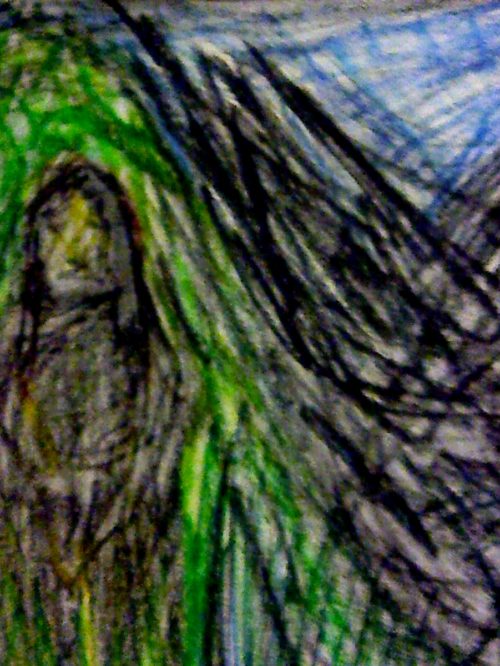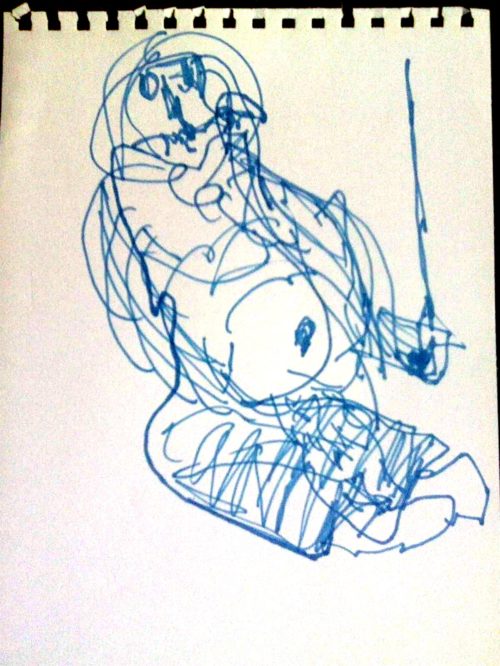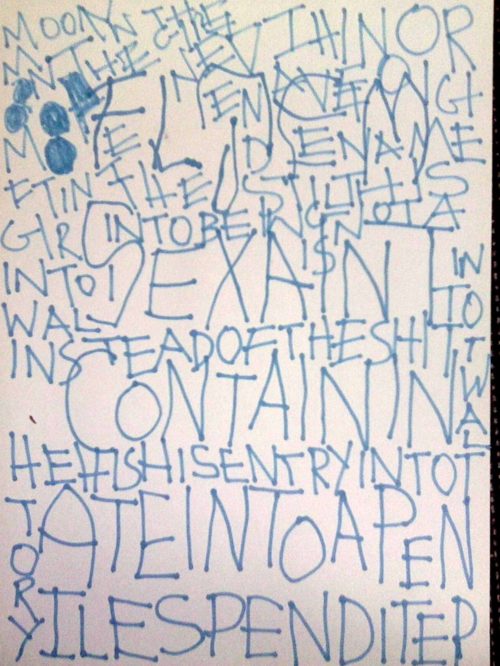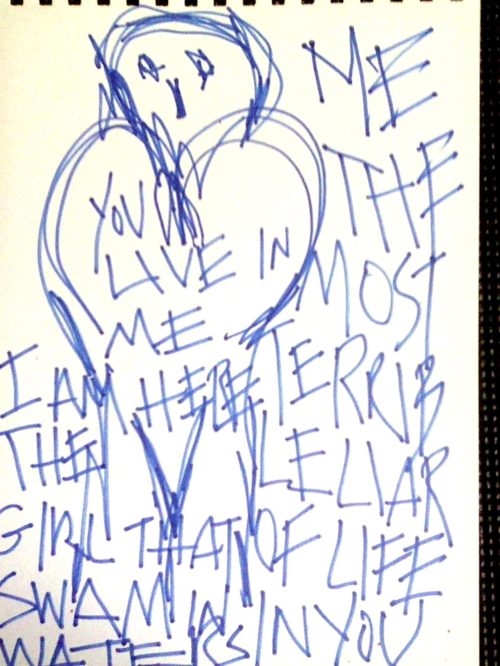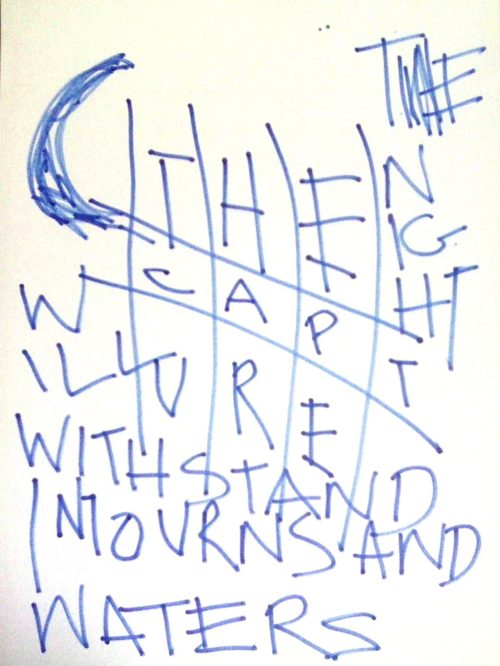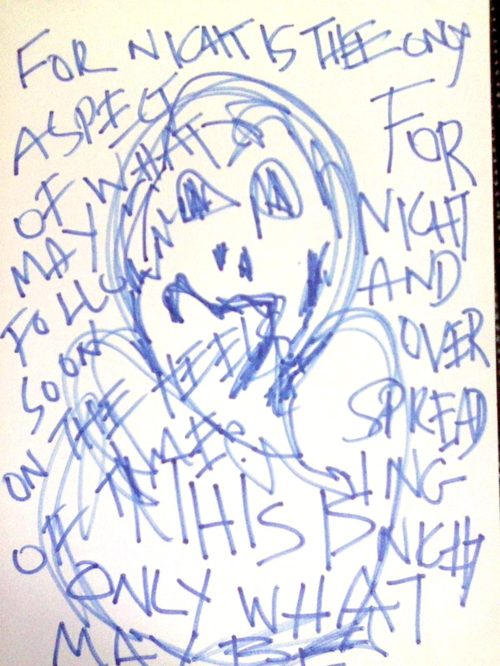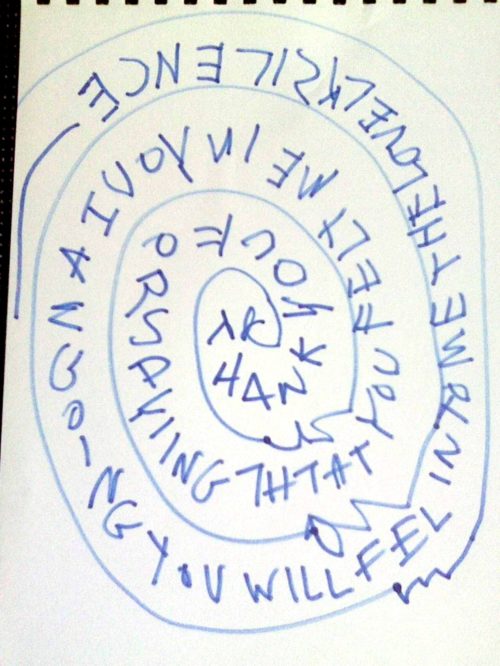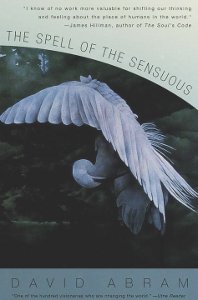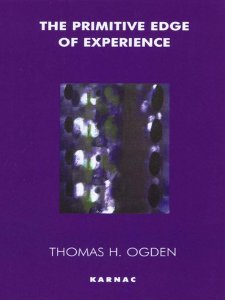An hubristic title for this piece, which should really be called “Boffo’s Modest Contribution To The Already Extensive Literature On Sigil Magick.†Or “Stuff You Might Like To Have A Think About In Case It All Goes To Shit.†Or just “Think On, Pal.†You get the idea.
There is material on working with sigils throughout the literature on Chaos Magick. If you need good guides to the fundamentals before reading further, you could go to Chaos Matrix or Rune Soup or Disinfo. They’re all useful.
If you’re not too daft about your aims, sigil magick works. Therein lies both encouragement and warning.
Here are mine: I do not encourage you to practise magick of any sort, and expressly warn you against it. For so it is written: speak not of magick, Clodhopper, and delve not into the arcane arts, for weird shit happens and you will lose your grip on consensus reality. You are hacking your software and overclocking your hardware. It is entirely possible that you will brick yourself, and there is no factory reset. There is only onwards, or a pretence that that weird stuff never happened, or wasn’t in fact weird at all. Which only ever partially works.
But because your old pal Boffo has been about a bit and knows a few things about the ways of people, he knows that’s not going to stop you, is it, incorrigible rogue? So back to the encouragement and warning. It is extremely encouraging how well sigil magick works and it’s as well to be warned about a few things.
How it works is open to discussion. Let me say a little about two frames for understanding (but you could otherwise go quantum, information systems etc.).
“Spirit†magick might involve calling on the deity or spirit relevant to the task, working out the correct correspondences (planetary hour, temple decoration etc.), evoking/invoking the aforementioned deity and winging your desire off into the cosmos to hatch and come to fruition with that deity’s help.
A psychological account of magick might argue that no supernatural forces are at work, and that even when shit gets really weird we are working with equipment which is wholly ours. So on that account in the case of sigil magick we are firing our desire not into the cosmos but into our own unconscious, our deep mind. And indeed, there is evidence suggesting that when we inject into the unconscious something towards which we are motivated, we expand the probability of its occurrence when we are able to drop conscious censoring (Verwijmeren et al, 2011). So on the psychological account you can arguably use a stripped-down, bare bones methods of sigil charging and not involve any deities at all and the sigil will work just as well.
But of course these accounts are not exclusive or incompatible. You might believe in the ontological reality of your favourite god/goddess. You might not. When Gabriel and I evoked Thor and got the only roll of thunder that evening at the conclusion of the working, that’s a good moment whether or not you believe in the objective existence of the Norse pantheon (when we nearly wet our pants while evoking spirits of place out in the woods at night, that was also a moment. Contrary to the reputation of a lot of chaos magicians, we banished properly that night).
Just as the presence of a helping relationship seems to potentiate a rich array of placebo responses (Czerniak et al, 2016; Price et al, 2008), the theatre of magick, its setting and accoutrements, can potentiate the workings of the unconscious. And what’s “The Unconscious,†anyway? A linguistic device to encompass phenomena and experiences, and the way you define it (it’s all narrative, kids) will funnel your experiences of “unconscious†phenomena .
Thus you might believe that we can contact a divinity that is beyond us or you might believe that we have archetypal godforms within us, a capacity for an experience of the numinous into which tales of gods and goddesses fit like a key into a lock. For our purposes here it does not matter in terms of effectiveness, but the different beliefs will give your workings different hues. Choose your beliefs accordingly.
So we’re back to encouragement and warning. Be careful. If you evoke a godform or spirit to charge and launch a sigil, you are invoking that phenomenon into the deeper strata of your psyche. This might be a good thing if you have a commendable aim and have chosen your godform wisely.
These putative mechanisms are very good reasons not to use sigils for less than positive purposes or deploy in their creation entities whose attitude towards you is less than wholesome. Do not, for example, enlist a denizen of the Goetia to enslave someone to your sexual desires. If you are considering such workings, be aware that, apart from the ethical impoverishment of such actions, the process will pollute and debase you even further than you have already become polluted and debased in wanting to bring about such effects. Put simply, do not be a shoddy creep. Entreating a powerful goddess, who has the erotic flavour for which you aim, to help you develop an erotic allure more generally, might be more the ticket.
Further, because mechanisms are unclear and possibly variable, formulate your intent as tightly as possible. If your intent prior to sigilisation is “It is my will to have a penis as large as a horse,†you are opening up a world of potentially unwelcome possibilities. You might land an appendage which makes you the talk of the gym locker room, but that might be because it’s swollen to equine dimensions after dropping a dumbbell on it. Remember also, insatiable wretch, that there are ways to have a penis as large as a horse that the phrase “eye-watering†will not encompass. Am I making myself clear about formulation of intent (cf. Gabriel’s previous post on the monkey’s paw effect)?
You are limited only by your imagination and any risk assessments you do. Get your ethics and your formulations sorted out and it’s playtime.
References
Czerniak, E., Biegon, A., Ziv, A., Karnieli-Miller, O., Weiser, M., Alon, U., Citron, A. (2016) Manipulating the Placebo Response in Experimental Pain by Altering Doctor’s Performance Style. Frontiers in Psychology. 7: 874, 1-10. Retrieved at: https://www.ncbi.nlm.nih.gov/pmc/articles/PMC4928147/pdf/fpsyg-07-00874.pdf
Price et al (2008) A Comprehensive Review of the Placebo Effect: Recent Advances and Current Thought. Annual Review of Psychology, Vol. 59:565-590.
Thijs Verwijmeren, Johan Karremans, Wolfgang Stroebe, and Daniel Wigboldus (2011) The workings and limitations of subliminal advertising: The role of habits. Journal of Consumer Psychology, Volume 21, Issue 2, 206–213

